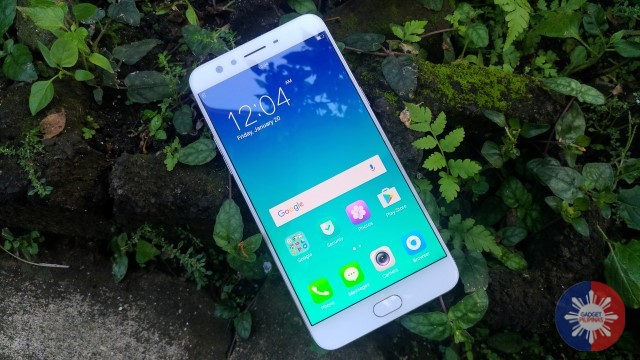With the recent launch of the OPPO F3 Plus, a lot of people are keen to know just how much improvement it brings to the table, not only from the bigger screen and the more powerful processing package, but of course, on how much better your selfies will look courtesy of its Dual Front Cameras.
Well, the good news is, we got our hands on the the company’s newest flagship, and we were able to spend a fair amount of time with it. So here’s what we think about the company’s newest flagship.
Simple Packaging that Comes with Something Extra
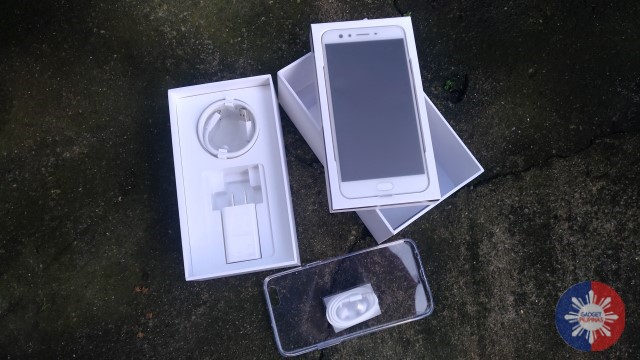
There’s nothing fancy about the F3 Plus’ packaging. If anything, you’d expect something like this to come in a big box with lots of freebies inside. But nope. OPPO has packed it with the usual Charger, Data Cable, Headset, SIM Ejector, manuals, and a case, which are just about everything needed to get you started.
Same Old Design, Just Bigger
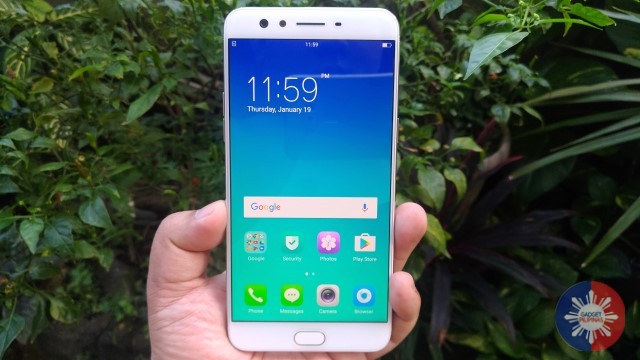
The F3 Plus doesn’t really veer away from the design language of the F1s. It still has the soft curves, the lines at the back, the usual OPPO branding, and the white face, though now with two front-facing cameras, and a bigger form factor.
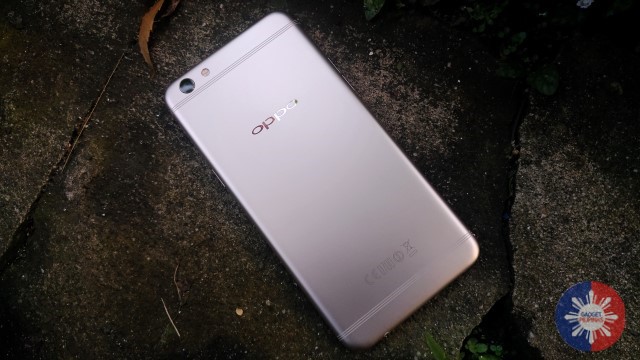
While I didn’t have any problems with handling, people with smaller hands may have some difficulty when using the phone with one hand. But I think that’s an acceptable price in exchange for more real estate.
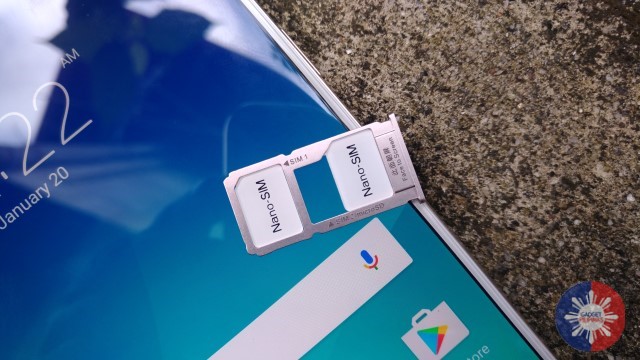
Volume rocker on the left, and power button + SIM Card Slot on the right. Strangely, they got rid of the triple slot tray and opted for the usual Hybrid one. I’m not sure if this was a design restriction, but I think they should’ve just retained the former.
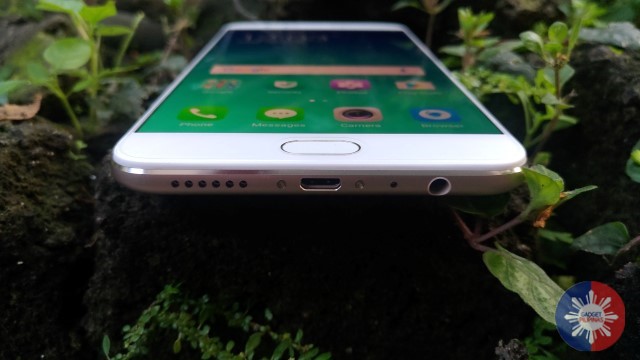
They also stuck with a standard MicroUSB port at the bottom, along with a single speaker, the microphone, and the headphone jack.
More Room for Content
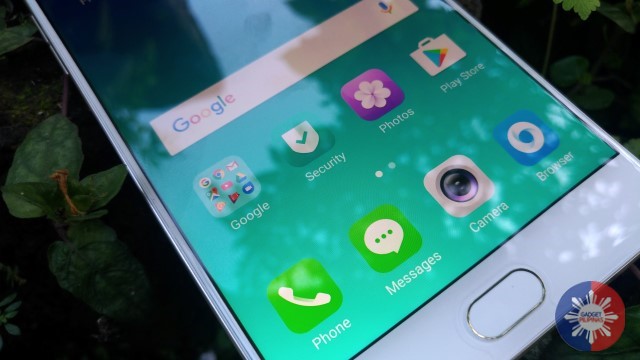
The 6-inch Full HD AMOLED display is a joy to look at. Its more vibrant, and Colors pop out as if you’re in legoland. Brightness is excellent as well, which makes the phone usable even in direct sunlight.
This thing is a treat if you’re into media consumption. Watching movies, playing games, even the Facebook app looks better on it.
A Good Fit
OPPO F3 Plus Specs
- 1.95GHz Qualcomm Snapdragon 653 Octa-Core Processor
- 4GB of RAM, 64 GB of Internal Storage Expandable via MicroSD Card (Up to 256GB)
- 6-inch Full HD Display with 2.5D Gorilla Glass 5 Protection
- Rear Camera: 16MP, Sony IMX398, Dual PDAF, f/1.7
- Front Camera: 16MP, f/2.0 + 8MP, 120 Degree Wide Angle, 6P Lens
- LTE, Dual SIM
- ColorOS 3.0 on top of Android 6.0 Marshmallow
- 4000mAh Battery
- OTG
- VOOC Rapid Charging
- Sensors
- Distance
- Light
- G-Sensor
- E-Compass
- Gyroscope
- Fingerprint
The Snapdragon 653 processor seems like the perfect fit for the F3 Plus. I didn’t run into any problems when using it as a daily driver, having used it for email, social media, web browsing, YouTube videos, and taking photos. The device didn’t show any signs of slowdown even when I constantly had to switch between apps.
Gaming performance was even better, especially on a screen as large as this one. Casual games like DJ Max Technika Q, as well as more mainstream and resource-heavy games such as Mobile Legends and NBA 2k17 all ran well without any issues.
ColorOS Based on Marshmallow
The newest version of ColorOS basically looks the same, though the icons are a bit too big for my taste. There’s still no app drawer, and no double-tap to sleep (but there’s double-tap to wake). Overall though, navigation was noticeably smoother and more fluid, and it still offers ample room to personalize the device.
Impressive Rear Camera
Good-lighting conditions really brought out the strength of the F3 Plus’ rear camera, as photos came out sharp, vivid, and detailed.
Low-light shots weren’t as good with the noticeable noise buildup, but were still decent in general.
The camera interface is quite simple, with a set of filters, and a few modes to work with including Pro mode for in-depth tweaking.
Great Selfies, Blur Effect Looks Unpolished
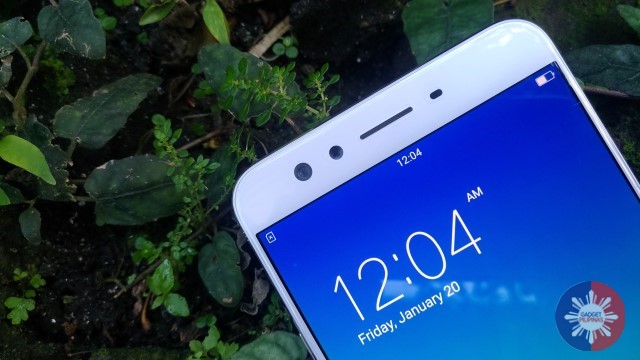
Being named as the new Selfie Expert carries a lot of expectations, especially now that the device touts a Dual Front Camera setup (which means more light can pass through the sensor, allowing for better low light shots).
So how did our selfies come out? when the Blur effect (or Bokeh) is disabled, they actually did look good. Details were present, and color reproduction was on point, without any hint of over-processing.
When the effect is enabled though, the quality remains decent, except that the blur effect looks artificial, inaccurate, and pixelated. This could be something that OPPO can easily patch via software update, so we’re hopeful that it will get fixed eventually.
Low light selfies could pass, as the level of noise was less than I expected, and much of the details were retained.
Decent Speaker, Better with Headphones On
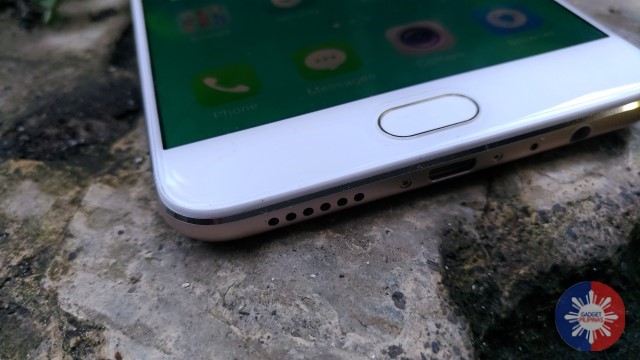
The speaker on the F3 can get really loud with noticeable distortion at high volume, and the overall signature falls short on clarity. Add that to the fact that it’s positioned in a place that is often covered by your palm when using the device in landscape mode.
Connect a decent pair of headphones, and you’ll get a better experience. Volume is just right, bass is more evident, and instruments feel more upfront without drowning the vocals. Treble could use some work though.
Excellent Battery Life

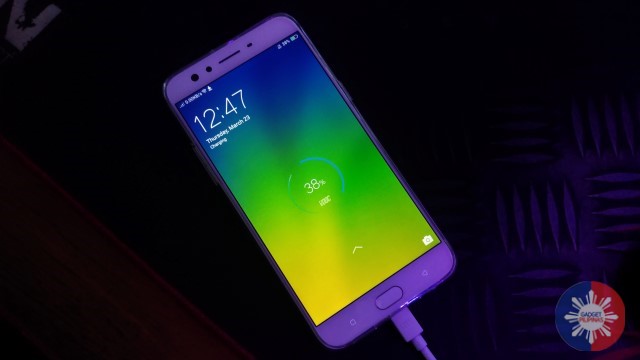
Even with the larger and higher quality display, the F3 Plus was able to yield an impressive 11 hours of up time in a single charge. It’s also fitted with VOOC rapid charging capability. during my test, the device managed to achieve 19% to full charge in about 1.5 hours, which is impressive.
Verdict
The F3 Plus is certainly a worthy successor to the F1s. In terms of design, OPPO has chosen to stick with the current formula, and focused on the more important things such as performance and imaging.
The display quality is excellent, the processing package handled almost everything I threw at it, whether it be daily tasks, multi-tasking, or heavy games, and the software runs buttery smooth as it always did.
The rear camera takes good quality photos in good lighting, and decent ones as the condition deteriorates. The dual-front camera certainly helps in improving the quality of selfies as well, but the blur effect looks too artificial and needs some work. Hopefully, it’s something that can be fixed by an update. Then there’s the PhP23,990 price tag, which i think is a bit too much for a mid-range device.
Regardless, if you don’t mind carrying a phablet, and media consumption, gaming, and taking selfies are your top priorities, then the F3 Plus is a great choice.
The Good
- Design
- Display
- Performance (General and Gaming)
- Camera Performance (Day)
- Charging Time
- Optimized Software
- Fast Fingerprint Recognition
- Sound Quality on Headphones
The Not So Good
- Blur Effect looks unpolished and too artificial
- Camera Performance (Low Light)
- Hybrid SIM Tray
- Sound Quality on Speaker
- Speaker Placement
- Price
Emman has been writing technical and feature articles since 2010. Prior to this, he became one of the instructors at Asia Pacific College in 2008, and eventually landed a job as Business Analyst and Technical Writer at Integrated Open Source Solutions for almost 3 years.

